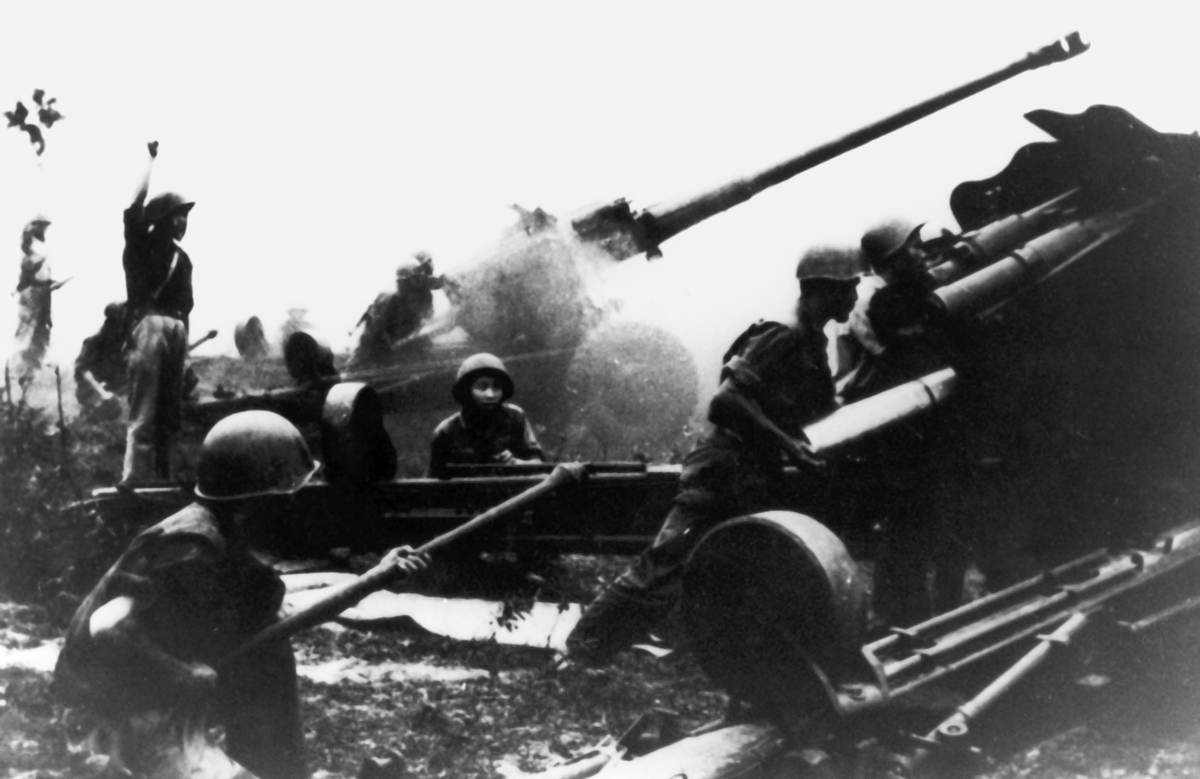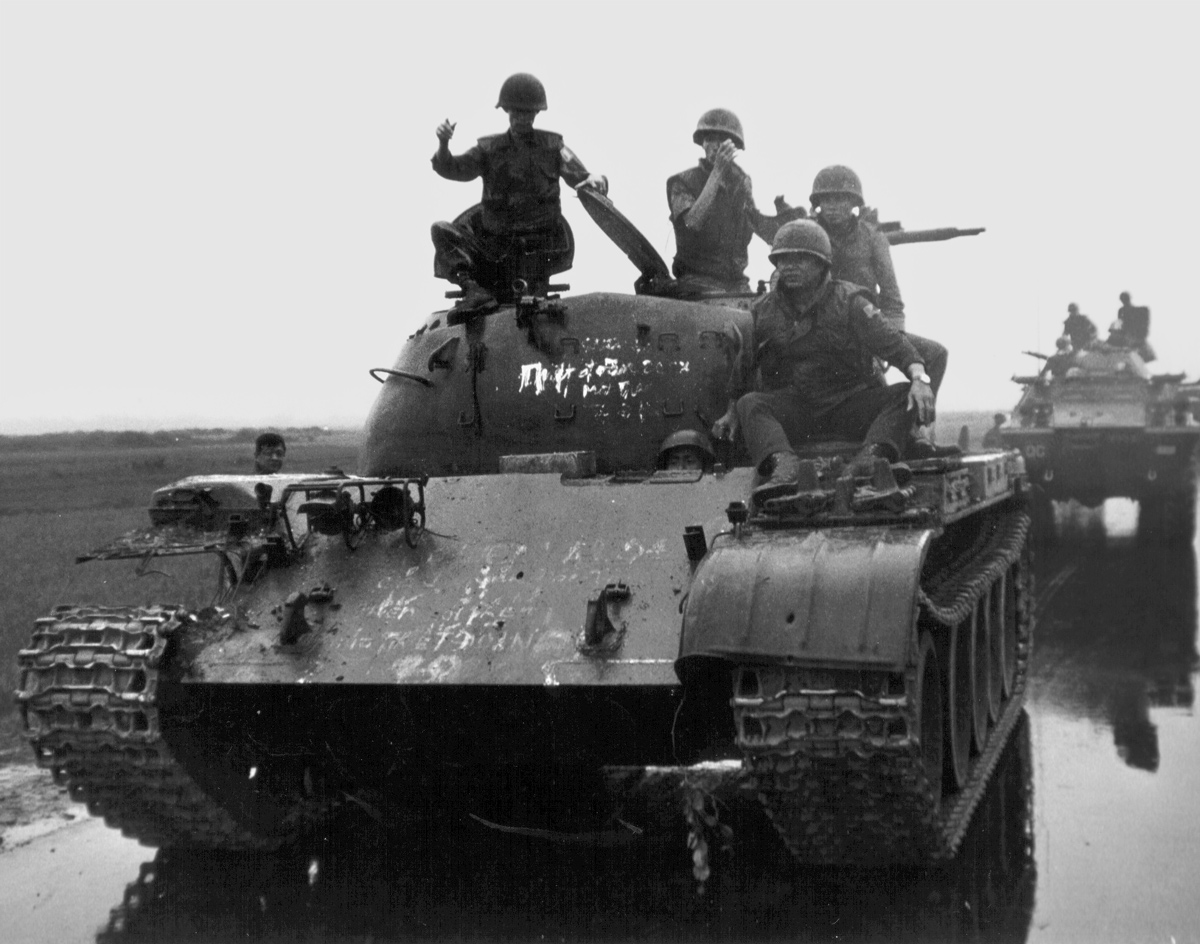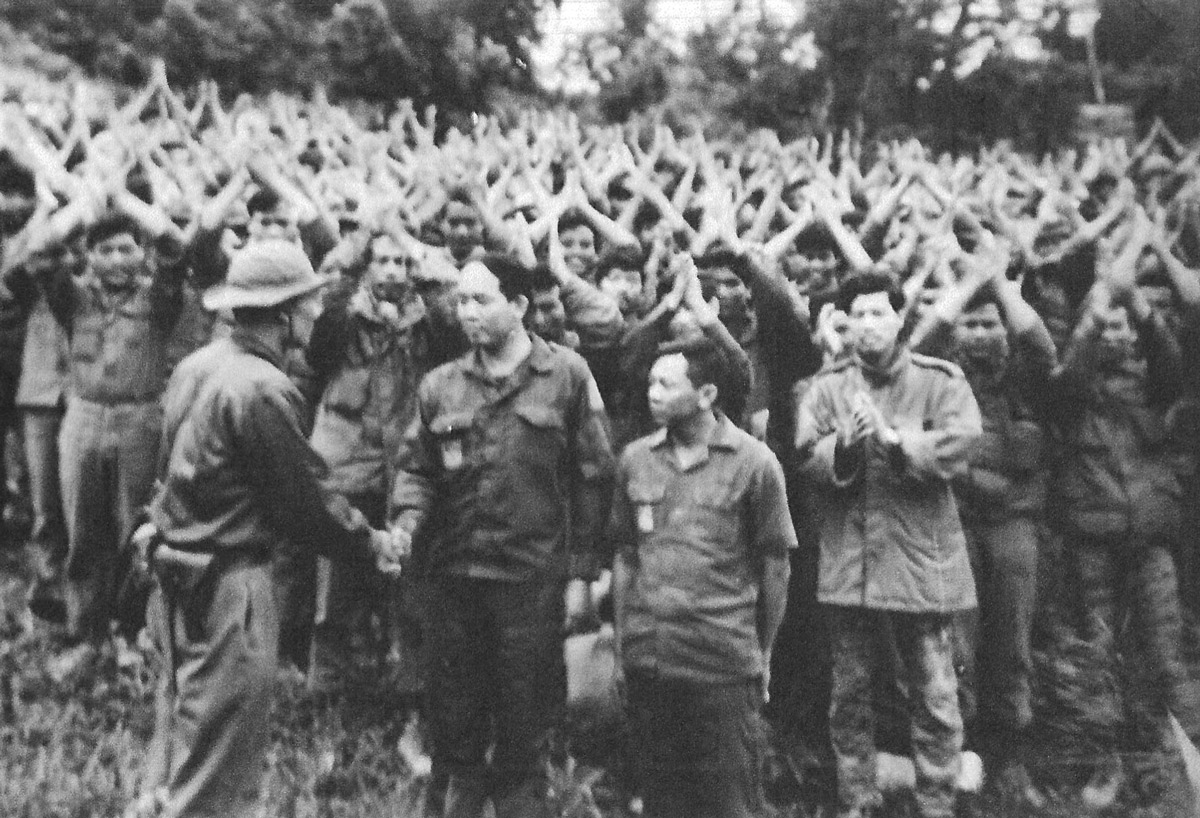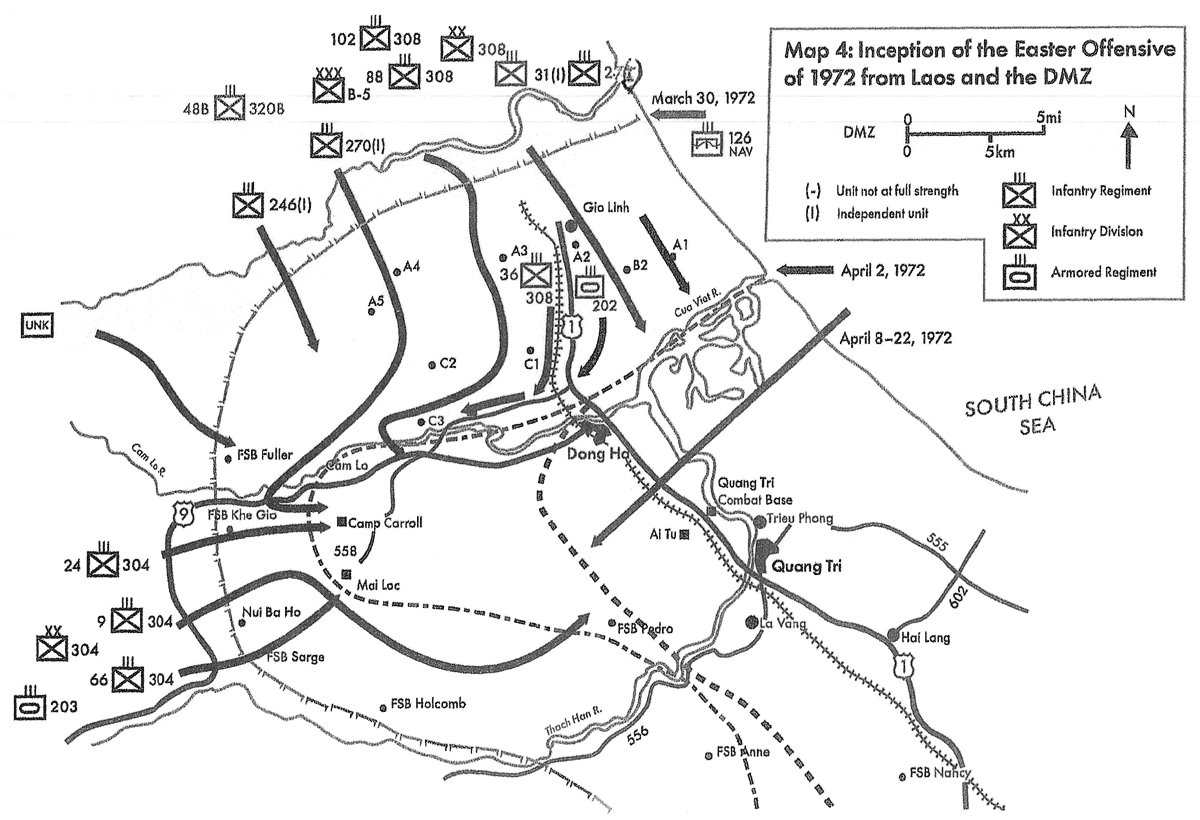Intelligence Ignored

PAVN 122mm artillery battery goes into action on the Kon Tum front. (Joel D. Meyerson, Images of a Lengthy War. Washington DC: US Army Center of Military History, 1986.)
By W.R. (Bob) Baker
Originally published in Small Wars Journal, 02/01/2023
https://smallwarsjournal.com/jrnl/art/intelligence-ignored
As the Easter Offensive of 1972 was the precursor to the signing of the Paris Peace Accords of 1973, there were two occasions where the United States could and should have moved against North Vietnam earlier but didn’t.
The first time occurred prior to the invasion of South Vietnam by the North Vietnamese Army (NVA), which began of March 30, 1972, was when William Stearman, a career Foreign Service member who went over to the National Security Council (NSC), put together a small sub rosa group before the Easter Offensive. This group was composed of NSA, CIA, and DIA members, as well as Dr. Steve Hosmer of RAND and Dr. Stearman. Using Open-Source Intelligence (OSINT)—the Hanoi newspapers—they had they first inkling of what was to be the Easter Offensive in the fall of 1971.
They found that North Vietnamese men who were previously exempted (both skilled and physically unfit, Chinese, and Montagnards who didn’t speak Vietnamese) were all being conscripted in North Vietnam, they looked at seasonal weather patterns, and “communications shifts,” all of which brought them to the conclusion that the date of the invasion was to be somewhere around 10 days before it actually occurred, which was March 30th. This analysis was passed to Henry Kissinger’s deputy, General Alexander Haig. “I wrongly passed this on to Al Haig who seems to have ignored it, since our generals were caught by surprise,” Stearman wrote.
The second occurrence happened shortly afterward.
DIA (the Defense Intelligence Agency) noticed a large increase in men, materiel, and new unit traffic headed south along the Ho Chi Minh Trail. Sound, heat, urine, and vibration sensors were placed along the Trail to detect movement of troops and trucks. Colonel Peter Armstrong, USMC, wrote, “Our estimate was based on hard intelligence, and as the intelligence business is a very competitive one, I also enjoyed the fact the DIA was first on the street with the new estimate.”
The 571st Military Intelligence Detachment (the only US intelligence unit still operating in South Vietnam’s I Corps) however, never received anything from DIA, nor any reference to their estimate. COL Armstrong also wrote that, “South Vietnamese units, while well aware of the impending offensive, were not prepared for the enormity of the Communist’s thrust directly through the DMZ.” If they were so well aware, why did US Ambassador (to South Vietnam) Ellsworth Bunker, General Creighton Abrams (MACV commander), and Major General William E. Potts (his J-2, Intelligence officer) all leave the country and why did two ARVN regiments below the DMZ turn off their comms and hit the road to swap positions on the very morning of the Easter Offensive of 1972? None of which could possibly indicate any sign of “high levels of awareness” or warning.
Surprisingly, the full extent of the invasion only became evident four days later. President Nixon “insisted that it was impossible for the North Vietnamese to have assembled three divisions and support facilities without the Pentagon’s knowing about it. Laird, so the President made clear, had deliberately withheld the information.” Secretary Laird must not have remembered COL Armstrong’s briefing he received in January 1972.

Members of the South Vietnamese 20th Tank Regiment ride a captured North Vietnamese T59 tank south of Dong Ha during the Easter Offensive. (U.S. Army Center of Military History)
The 571st knew something was going to happen from the information our agents were sending to us. This Human Intelligence allowed us to translate their information into exact locations and to correctly surmise their initial intentions—few headquarters (both in-country and out) listened until the NVA invasion began. For instance, one of the three NVA divisions was positioned west of Hue three weeks before one division entered South Vietnam from the Trail as another division and multiple independent regiments came south through the Demilitarized Zone early on March 30th.
If the generals and admirals in and out of Vietnam had heeded our intelligence, things would certainly have been different. Ultimately, there would probably have been far fewer American and South Vietnamese casualties as the US slammed the door in helping South Vietnam withstand the communist North.

NVA Colonel Ba Ho Van Duyet (38th NVA Artillery Regiment), shaking hands with the surrendered 56th ARVN Regiment commander, Lieutenant Colonel Pham and his assistant regiment commander Lieutenant Colonel Vinh Phong, amid some 600 ARVN soldiers. It is suspected that this photo was taken by the revolutionary party. (http://hothihongnhungdr.blogspot.com/
2012/01/nguoi-trung-ta-quan-oi-sai-gon-phan.html )
Commanding Officer, 56th Regiment, 3rd ARVN Division—Message of Surrender
On April 3, 1972, Lieutenant Colonel Pham Van Dinh made the following broadcast over Radio Hanoi, less than 24 hours after he surrendered the 56th Regiment at Camp Carroll, Quang Tri Province to the North Vietnamese forces. His radio message was recorded at that time and subsequently translated into English:
“I, Lieutenant Colonel Pham Van Dinh, 56th ARVN Infantry regiment commander have returned to the National Liberation Front forces. My regiment was stationed at Tan Lam (CARROLL) firebase. On 30 March 1972 my unit was receiving a heavy shelling from NLF forces. All of the other friendly forces which were operating around our area or were stationed near our firebase were destroyed one after another. If we continued to fight we would be without all of our logistical and combat support as well as medical evacuation. I was sure that my unit was going to have many casualties. Meanwhile most of the friendly forces and the rest of the 3rd ARVN Division were evacuated to places which were safer. They left us alone under strong pressure of the NLF forces.
“Most of the troops of my unit in all ranks refused to fight anymore. I and Lt. Col. Vinh Phoy, who is my executive officer, also decided to refuse to fight anymore. In order to prevent further loss of life of my soldiers, I called for a meeting attended by all my unit commanders. At the meeting we decided to surrender to all of the NLF forces. We communicated this decision to the NLF at 1430 hours 2 April 1972 via PRC-25 radio.
“After we left the firebase we were well treated by the NLF forces. The relationship between us and the NLF forces was getting closer and closer.
“On this occasion, I advise you ARVN troops that you better return to the NLF, because the NLF fighting spirit is getting higher and higher than ever, and of course, the AmericanThieu gang is going to lose the war; the war the Americans called the Vietnamization war. They have been trying to use us against part of our own people’s patriots.
“The South Vietnam government is also using us to continue the war that they feel can benefit them as individuals.
“I think that your continued sacrifice at this time means nothing. Again, I ask you to not let the Thieu-American regime take advantage of your fighting potential. If they send you out to the field you must refuse the combat order. If they force you to go, then you must not fight the NLF. Instead, find out how to get in touch with the NLF forces in order for you to return to the people. Your action will effectively assist in ending the war quickly and also save your life.
“My personal feeling is that the NLF forces are going to win the war. The NLF is ready all the time to welcome you back. The NLF is expecting you to return very soon.”
About the Author:
W.R. (Bob) Baker, an intelligence-trained analyst, was assigned to the 571st MI Detachment/525th MI Group in Da Nang, Vietnam, which was effectively the only intelligence unit still operating in I Corps during the Easter Offensive of 1972. His book Break in the Chain—Intelligence Ignored was written as the sole intelligence analyst in I Corps during the offensive, and has been reviewed by most of the US intelligence agencies and also endorsed by others who were also there during this period.

In addition to exposing a “break in the chain” of intelligence related to the Easter Offensive, Bob Baker’s book is a warning that the causes of “intelligence ignored” are not solely applicable to the context of the Vietnam War. They are implicit to human nature and the all-too-human potential for those in authority to construct their own preferred (and willfully enforced) versions of reality. A biblical proverb states there is wisdom in many counsellors; similarly there is wisdom in respecting diverse forms of intelligence gathering and a consequential folly in marginalizing one at the expense of the other. This applies particularly to HUMINT gathered by heroes whose names will never make it into a commemorative Hall of Fame. Bob’s book suggests very pointedly that those in command should learn how to listen and that intelligence analysts must do all within their power to make them hear.
As for Colonel Pham Van Dinh’s defection at Camp Carroll, the language of his broadcast is suggestive of a typically crude attempt by Hanoi to induce a disastrous betrayal of South Vietnam. How dare they! From 1972 onward, that was more properly the job of “antiwar” Democrats in the US Congress, and they were much more effective at it than the North Vietnamese. (Former US Army intelligence analyst Louis A Fanning makes this painfully clear in his book, ‘Betrayal in Vietnam’.) Dramatic reductions and rapid withdrawals of US troops despite blatant North Vietnamese aggression (Bob Baker’s intelligence unit being among the last to leave in1973) were paralleled by a catastrophic decrease in logistical and political support for South Vietnam. As Bob Baker opines, the betrayal of South Vietnam in 1975 was a national disgrace. If there had been no ‘break in the chain’ in 1972 could that disgrace have been averted? Perhaps not, but it is clear from Bob’s book that wishful thinking and the arrogance of power is a leading cause of intelligence ignored, one which leads inevitably to tragic loss of life, and makes a signal contribution to the defeat of an ally.
Bismarck tells us that fools learn from experience, but surely even that is better than not learning anything at all, particularly with regard to our own inherent flaws. As another oft-quoted strategist observes, to safeguard ourselves (and our dependent allies) from peril, we must know ourselves as well as the enemy. Maybe then we will be less inclined to ignore sound advice with regard to that enemy’s intentions.
Well said! But because the SFA maintains a neutral position in regards to politics and thus political parties, it must be stated that the views and opinions expressed by our readers do not necessarily reflect the views of the United States Army, the United States Special Operations Command, the Special Forces Association, or Special Forces Association Chapter 78.